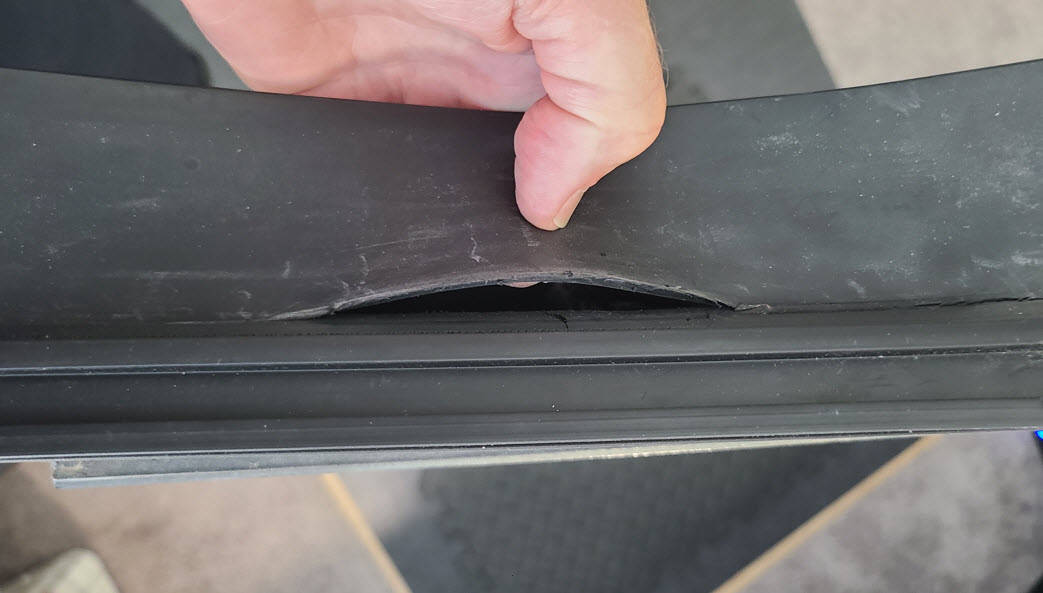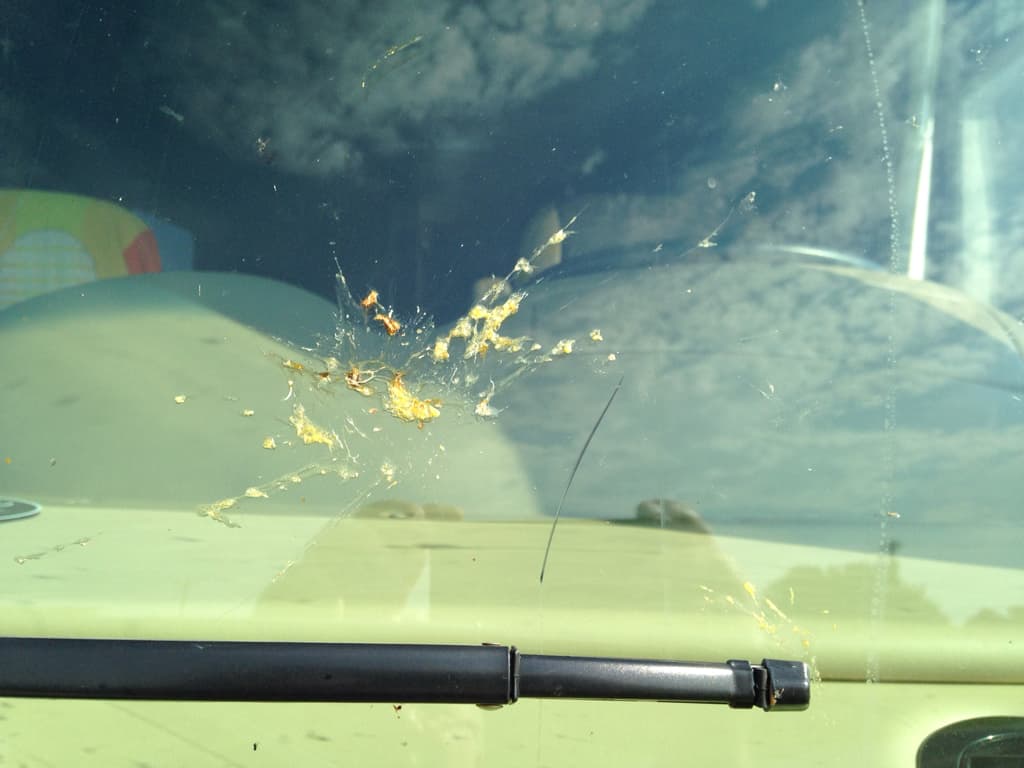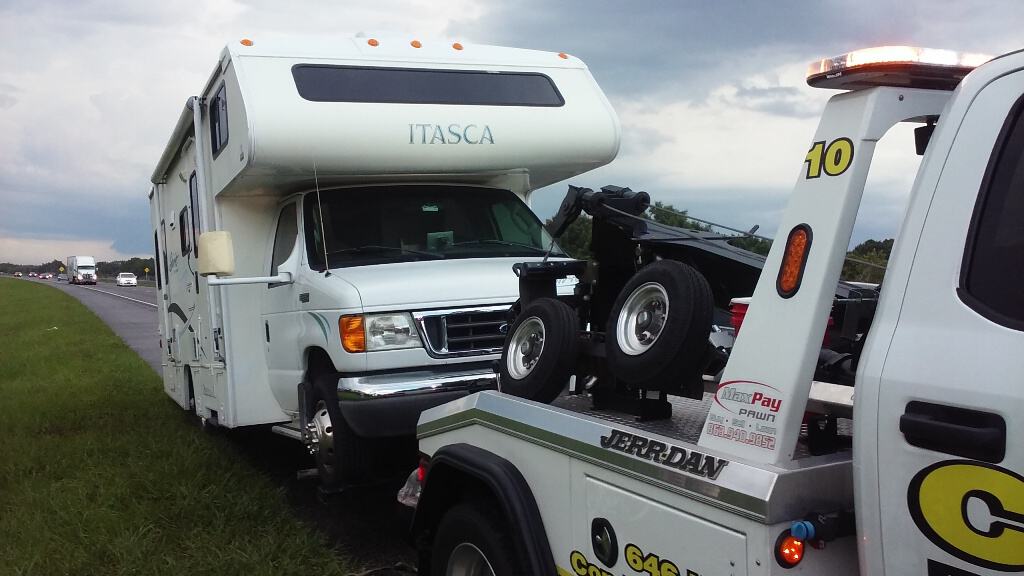In Partnership with Motorhome Tires
RVing offers the unique freedom of embracing each season’s charms, from summer beach vacations to cozy winter retreats. However, to ensure safe travels in your motorhome, travel trailer, or 5th wheel, it’s essential to understand the crucial role tires play in the success and safety of your RV experience.
Here Are a Few of The Best Tire Tips for All Seasons
Maintaining your RV tires properly is crucial for safety, fuel efficiency, and overall performance, especially in different seasonal conditions. Let’s review the most important RV tire tips for each of the four seasons.
RV Tire Tips for Spring
Spring’s varying temperatures can lead to fluctuations in tire pressure. Typically, for every 10 degrees Fahrenheit change in air temperature, your tire’s pressure will change about 2%. It’s essential to check your tire pressure regularly during the spring. Always consult your tire manufacturer’s tire inflation chart to find the correct pressure for your RV’s weight is one of the RV tire tips you will hear repeated ad nauseam. When on the road for extended periods, check tire pressure once per week, and every day that you travel.
Inspect your tires for damage
After winter, thoroughly inspect your tires for any signs of damage, such as cracks, bulges, or punctures. Pay close attention to the sidewalls, which tend to show damage first. If new tires are inevitable, shop for tires before the busy season hits. Free onsite mobile installation is available.
Check your motorhome tire air pressure
Tires lose pressure when stored over winter. Check tire pressure before your first spring trip and adjust accordingly. Remember, the recommended tire pressure is usually specified by the RV manufacturer, and it’s always based on a cold reading.
Rotate your tires
Most small travel trailers and Class B motorhomes can benefit from tire rotation, and you can often do this yourself. The larger the RV however, the more difficult and impractical this becomes. You may end up rotating some tires due to wear, but be cautious of any uneven wear that could be the result of an alignment issue of some kind.
RV Tire Tips for Summer
Summer heat can cause tire pressure to increase. Overinflation may lead to decreased tire traction, faster tire wear, and a harsher ride. It’s crucial to check your tire pressure in the morning when it is coolest, during the hot summer and adjust accordingly, using the manufacturer’s inflation chart as a guide.
Avoid overheating your RV tires
High temperatures can cause tires to overheat, which could lead to blowouts. Regularly check your tire pressure and adjust as needed.
Don’t overload your RV tires
Overloading is another common cause of blowouts. Be sure to check your RV’s weight restrictions and balance your load evenly. Once you have obtained an accurate weight of each axle, divide by the number of tires on the axle and reference the tire manufacturer’s load and inflation chart.
Minimize overexposure to direct sunlight
The sun’s UV rays can cause rubber to degrade over time. Use tire covers when the RV is parked to protect them from direct sunlight.
Do you meticulously wash your RV during summer? Pay attention to the cleaning products you use on your camper. Here’s why:
Bonus Tip: Avoid Spray-on Tire Products
While it may be tempting to spray on a tire product to make it look shiny and new, many of these products will actually deteriorate the rubber prematurely. We usually replace our automobile tires due to wear before this becomes a problem, but you won’t likely do the same with your RV. Your best defense is always a gentle rubber cleaner and then cover your tires completely. This is one of those RV tire tips that is often debated hotly.
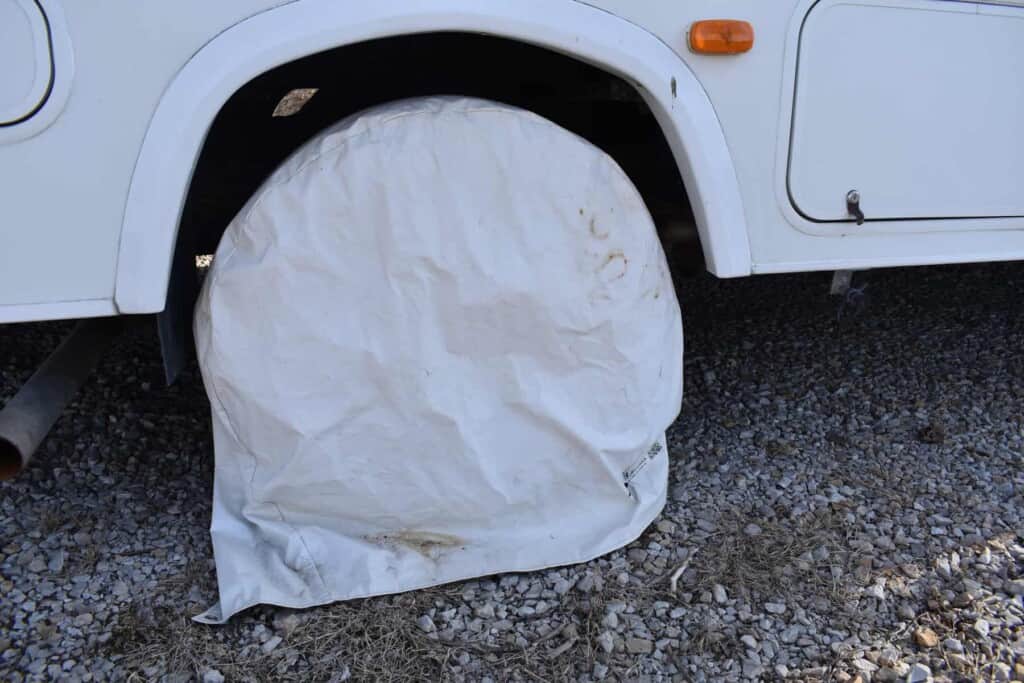
RV Tire Tips for Fall
Like spring, fluctuating temperatures during the fall camping season can lead to inconsistent tire pressure. Regular checks are essential, and pressure should be adjusted as necessary according to your RV’s weight, and checked early in the morning before the day’s travel.
Inspect for wear
After a busy summer, inspect your RV tires again for any signs of wear or damage. Look for uneven tread wear, which could indicate a problem with alignment or balance. Now is a good time to double check those date codes.
Check tire pressure again
As temperatures drop, tires can lose pressure. Regularly check and adjust tire pressure to maintain optimal performance.
Prepare for storage
If you’re planning to store your RV for the winter, clean the tires and check for any signs of damage. Remove any rocks or debris from the treads. Consider using tire covers to protect from UV damage and parking on a surface that prevents moisture from reaching the tires. When storing your RV for the winter, a recommended RV tire tip is to ignore the inflation charts completely and inflate the tires to their maximum PSI as stated on the side wall while in storage.
Flying south?
Snowbirds looking to migrate south for the season that have any doubt whatsoever about the condition of their tires should call Motorhome Tires before you make the long trek south. The team at Motorhome Tires are tire experts and can answer any question you have.
Bonus Tip: Avoid Spray-on Tire Products
Snowbirds looking to migrate south for the season that have any doubt whatsoever about the condition of their tires should call Motorhome Tires before you make the long trek south. The team at Motorhome Tires are tire experts and can answer any questions you have about winter RV tire care.
Winter RV Tire Tips
Low winter temperatures can cause your tire pressure to decrease. Underinflation can lead to increased tire wear, decreased fuel efficiency, and potential tire failure. It’s crucial to maintain the correct pressure, even when your RV is in storage, to prevent damage. Most “blowouts” occur because a tire is underinflated or overweighted, causing it to heat up and explode…even in winter.
Consider winter tires
If you’ll be driving your RV in winter conditions, consider investing in winter tires. These tires are designed with special tread patterns and rubber compounds to better grip snowy or icy roads. If this is impractical, on a Class A motorhome for example, consider traction products such as tire chains or tire socks. Some mountain areas will require chains or similar to travel on the road and you can be heavily fined if found without them.
Check tire pressure again
Winter conditions can be tough on tires. Check your tire pressure and inspect for damage frequently.
Avoid extreme cold
Extreme cold can damage tires. If possible, avoid exposing your RV’s tires to extreme cold for extended periods. If you can’t avoid it, consider using an insulated tire cover. If you are camping for a long period of time in cold conditions, consider RV skirting to keep the underside of your RV warmer, and thus the tires as well, especially if they are properly covered on the outside.
If new tires are in your future, winter might be the ideal time to buy them due to shoulder season deals. Find great tire deals for your motorhome at motorhometires.com. Tire installers are typically slower in the winter too, so it will be easier to book the free, onsite installation.
The Importance of RVing with Correct RV Tire Pressure
Maintaining correct RV tire pressure is vital to your camper’s performance and safety. Incorrect pressure can lead to tire failure, which can cause accidents, breakdowns, or even tire blowouts. Moreover, optimal tire pressure also improves fuel efficiency and increases the lifespan of your tires.
Yes, it’s easy to ignore the RV tire tips and simply set the tire pressure to the maximum sidewall PSI. But in many cases that can lead to an unnecessarily brutally rough ride. Safely and properly reducing the tire pressure according to the weight and load charts can give you a much better ride, with no risk.
Use RV Weighing and Tire Inflation Charts
The weight of your RV significantly influences the correct tire pressure. Therefore, it’s crucial to weigh your RV before referring to the manufacturer’s inflation chart. As mentioned, at minimum you should get a weight for each axle when fully loaded and ready for travel including all humans and supplies. Weighing each corner of your RV can provide an even more accurate guide.
Bonus Tip: Avoid Spray-on Tire Products
Divide the total weight of the axle by the number of tires and then consult the tire manufacturer’s load chart to find the exact tire pressure needed.
PRO TIP: Michelin has a great chart for their tires here.
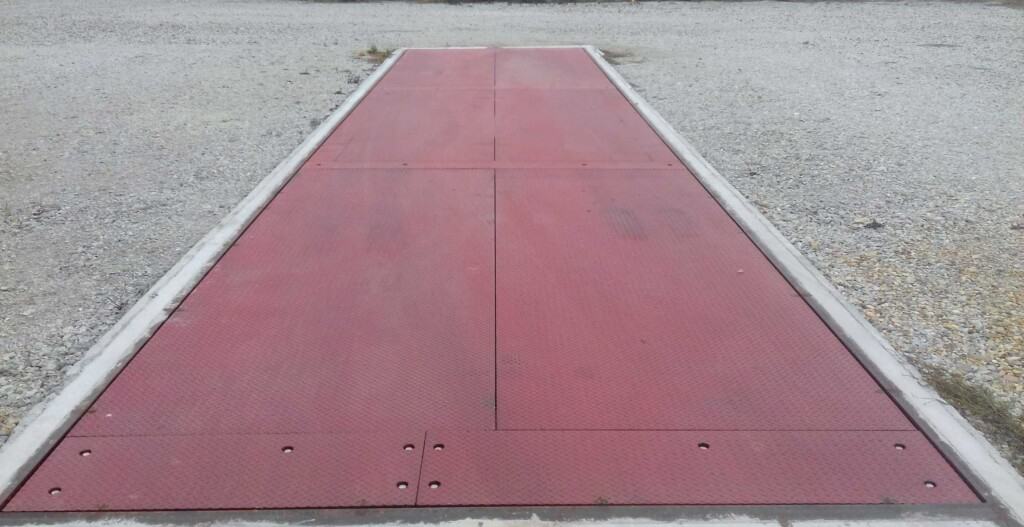
How Pressure and Elevation Affect RV Tires
Tire pressure can be significantly affected by elevation changes. The reason for this has to do with how pressure is defined: it is essentially the force exerted by the air within the tire against the inside of the tire, which is related to the air’s density.
When you change altitude, the air pressure surrounding the tire changes, and this can affect the tire’s internal pressure.
At higher altitudes, the external air pressure is lower. The relative pressure inside the tire increases, and vice versa when descending to lower altitudes. However, it’s important to note that this effect is not typically drastic enough to require adjustment under normal circumstances. Generally, these pressure changes are not extreme enough to put your tires outside of their safe operating range.
However, for an RV, which is typically heavier and puts more strain on its tires, this can potentially be more of an issue, especially during long drives over varied terrain. Consequently, tire pressures should be checked more frequently in these cases.
What if you’re traveling through significantly different altitudes?
It’s a good idea to check your tire pressures before you start your trip. Do it again once you arrive, and periodically while traveling.
How to Manage RV Tires During Elevation Changes
A passenger car’s tire pressure should be checked at least once a month and before long trips. When it comes to an RV, tires should be checked more frequently, such as every travel day.
- Tires should also be checked when they are cold (have not been driven on for at least three hours). Heat buildup from driving can increase pressure.
As for specific elevation thresholds for RV tires, the rule of thumb is:
- For every 1000 feet of elevation gain, tire pressure will increase by about 0.5 psi.
- and for every 1000 feet of descent, tire pressure will decrease by the same amount.
Again, this is a rough estimation. The actual change may be slightly different based on several factors, including ambient temperature and the specific characteristics of the tire.
Double check during drastic elevation changes
One final point: if you adjust your tire pressures at high elevation to manufacturer recommended levels, you should check them again if you descend significantly. The pressure could drop below safe levels due to the increase in external pressure. Conversely, if you fill your tires at low elevation and then ascend significantly, you should check to ensure they haven’t become overinflated.
Maintaining the correct tire pressure is crucial for safe driving, optimizing fuel efficiency, and maximizing the lifespan of your tires. Always refer to the manufacturer’s instructions for specific recommendations about your particular RV and tires.
Tips for Motorhome Tire Replacement
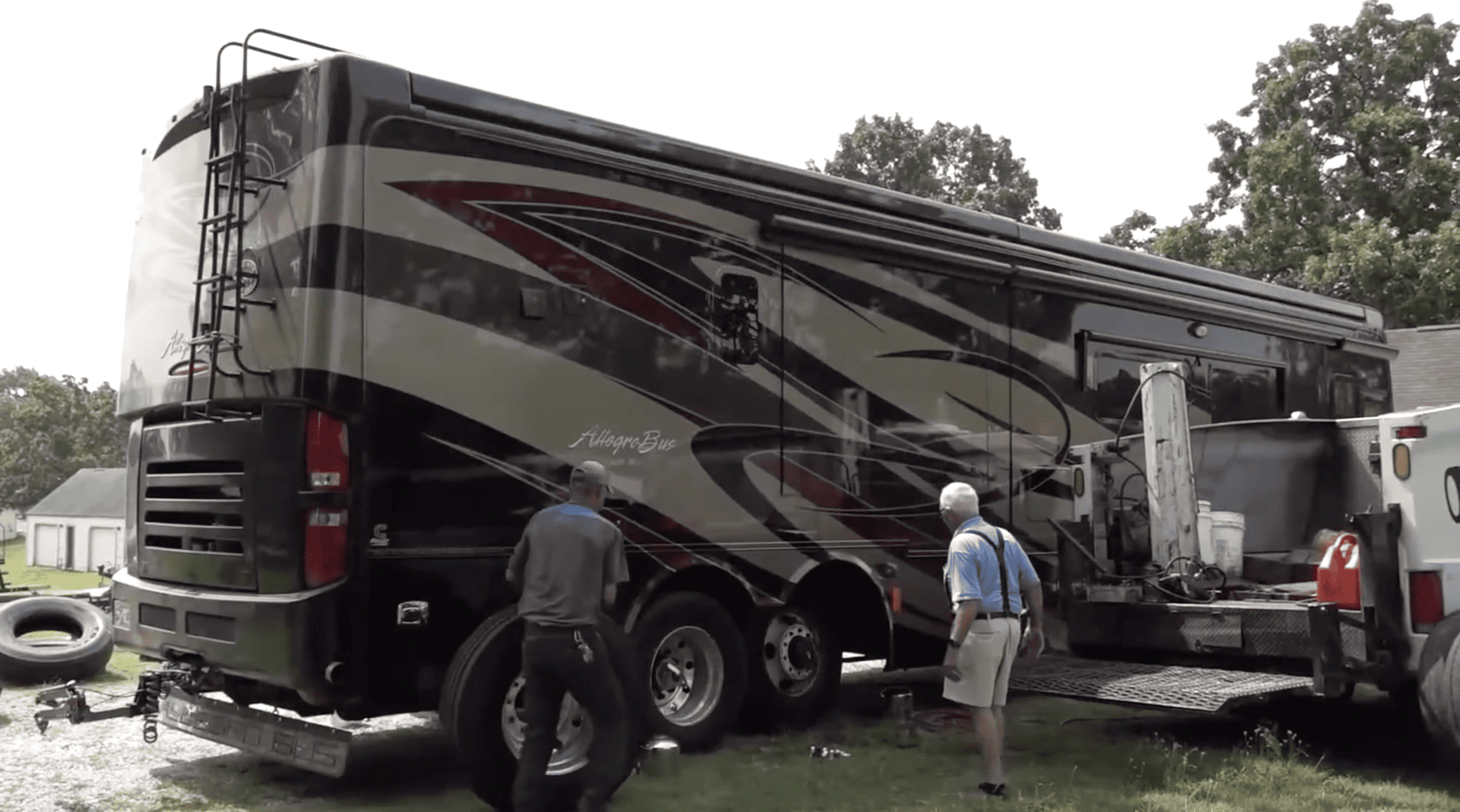
In addition to these RV tire tips, it’s important to replace your RV tires every 5-7 years, or sooner if they show signs of wear. Even if the tires look fine, rubber degrades over time, and older tires are more prone to failure. You should understand the DOT code system of dating your tires to check their true age.
For motorhome owners, the best solution for RV tire replacement is motorhometires.com.
Not only will you get competitive prices with fresh date coded tires, the installation is done right where you are, at a place of your choosing, not in the back of some dark, greasy truck stop. Motorhome Tires professional onsite mobile installation is provided free with tire purchase. Head over to motorhometires.com to search for your next set of tires.

